CAMBRIA family of parametric CAD toolsPermalink
The CAMBRIA project produced a series of interaction design artifacts related to the class of “multi-state” parametric CAD tools. In other words, tools that support working with multiple parametric design models in parallel.
Early-Stage SketchingPermalink
The figure below shows an example of ideation having been done by manually sketching possible approaches to interaction in CAMBRIA, by using markers on a whiteboard. Using this technique, the overall goal was to determine basic mechanisms through which, by combining different parts of certain artefacts (for example, bicycles, wheelbarrows, …), one could come up with a multitude of different yet related designs.
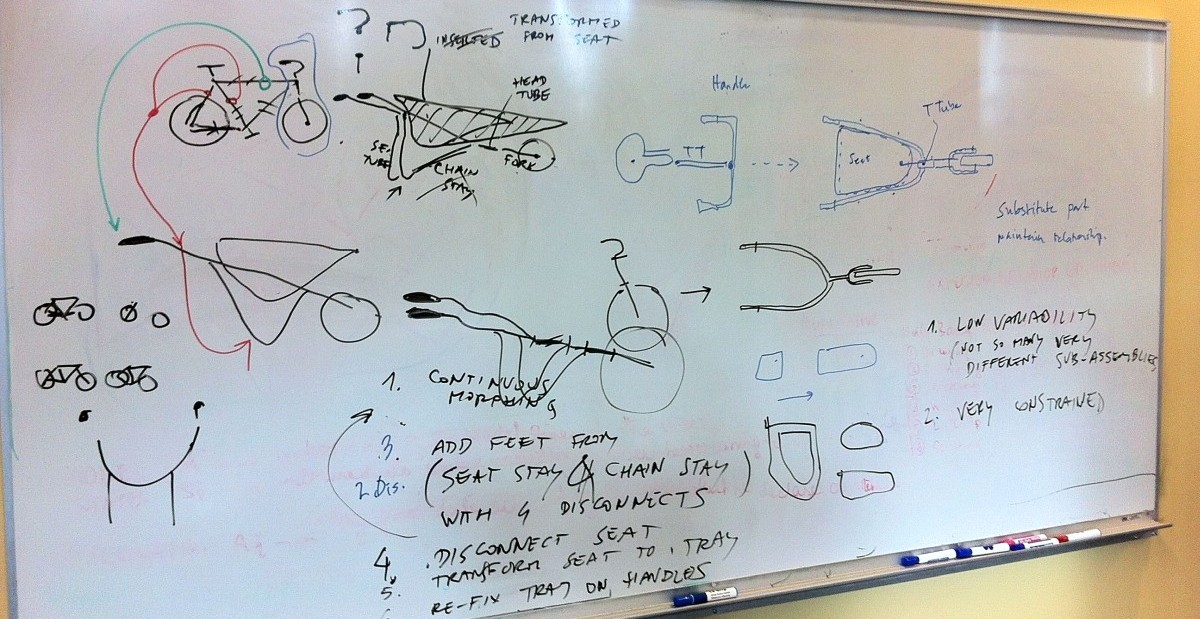 Early-stage interaction sketches: parallel editing of analogous parts for two different yet related designs: a bicycle design, and a wheelbarrow design.
Early-stage interaction sketches: parallel editing of analogous parts for two different yet related designs: a bicycle design, and a wheelbarrow design.
Early-Stage StoryboardingPermalink
The figure below shows a storyboard developed for CAMBRIA, in order to further explore the space of possible design solutions.
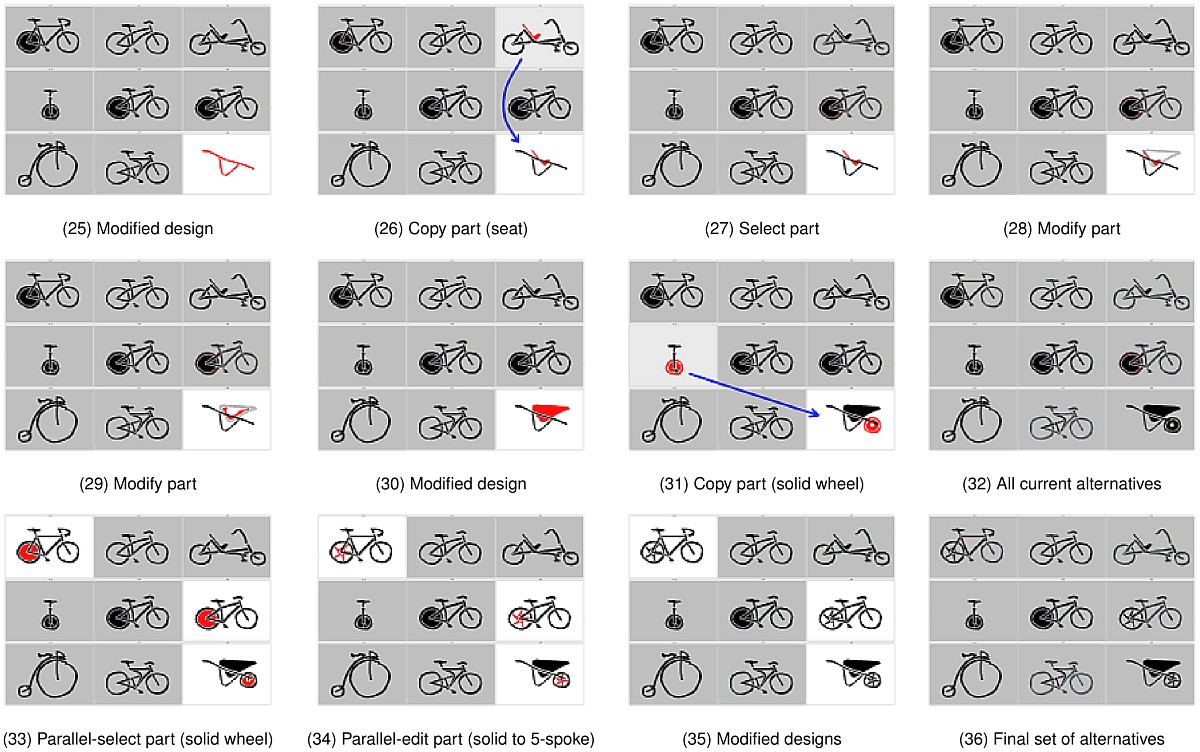 Early-stage storyboard for CAMBRIA.
Early-stage storyboard for CAMBRIA.
PrototypesPermalink
The following figure shows the main interface of a higher-fidelity CAMBRIA protoype.
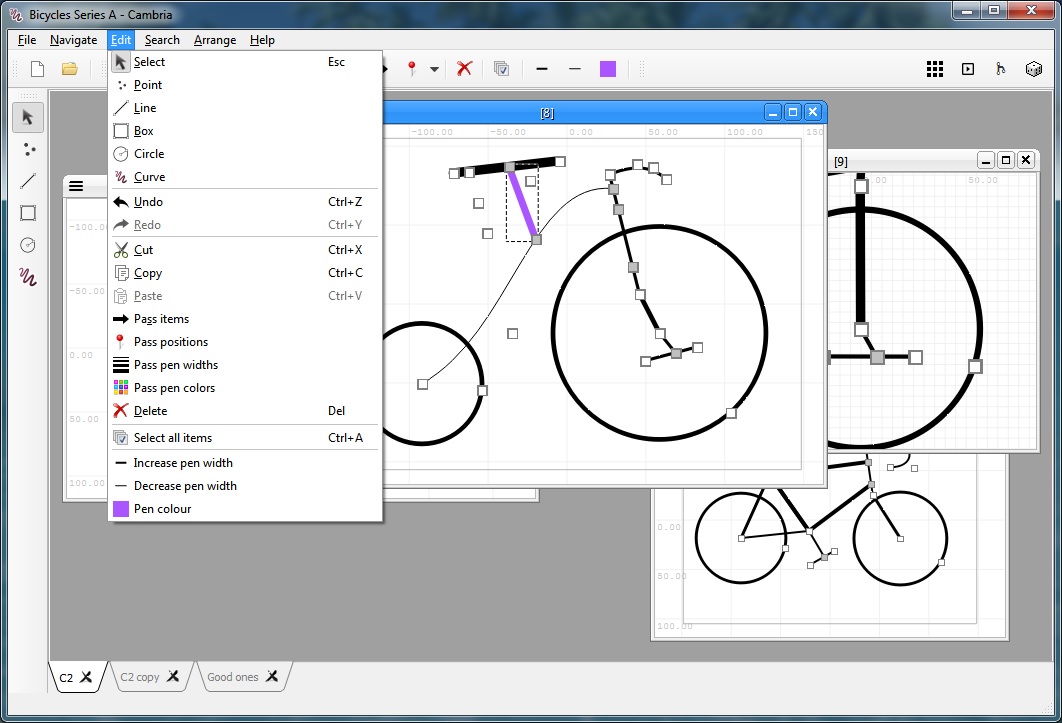 Screenshot of the CAMBRIA prototype (main interface).
Screenshot of the CAMBRIA prototype (main interface).
The following screenshot shows CAMBRIA with four different “arrangements” of alternatives: (1) grid, (2) slideshow, (3) design history, and (4) “random” arrangements.
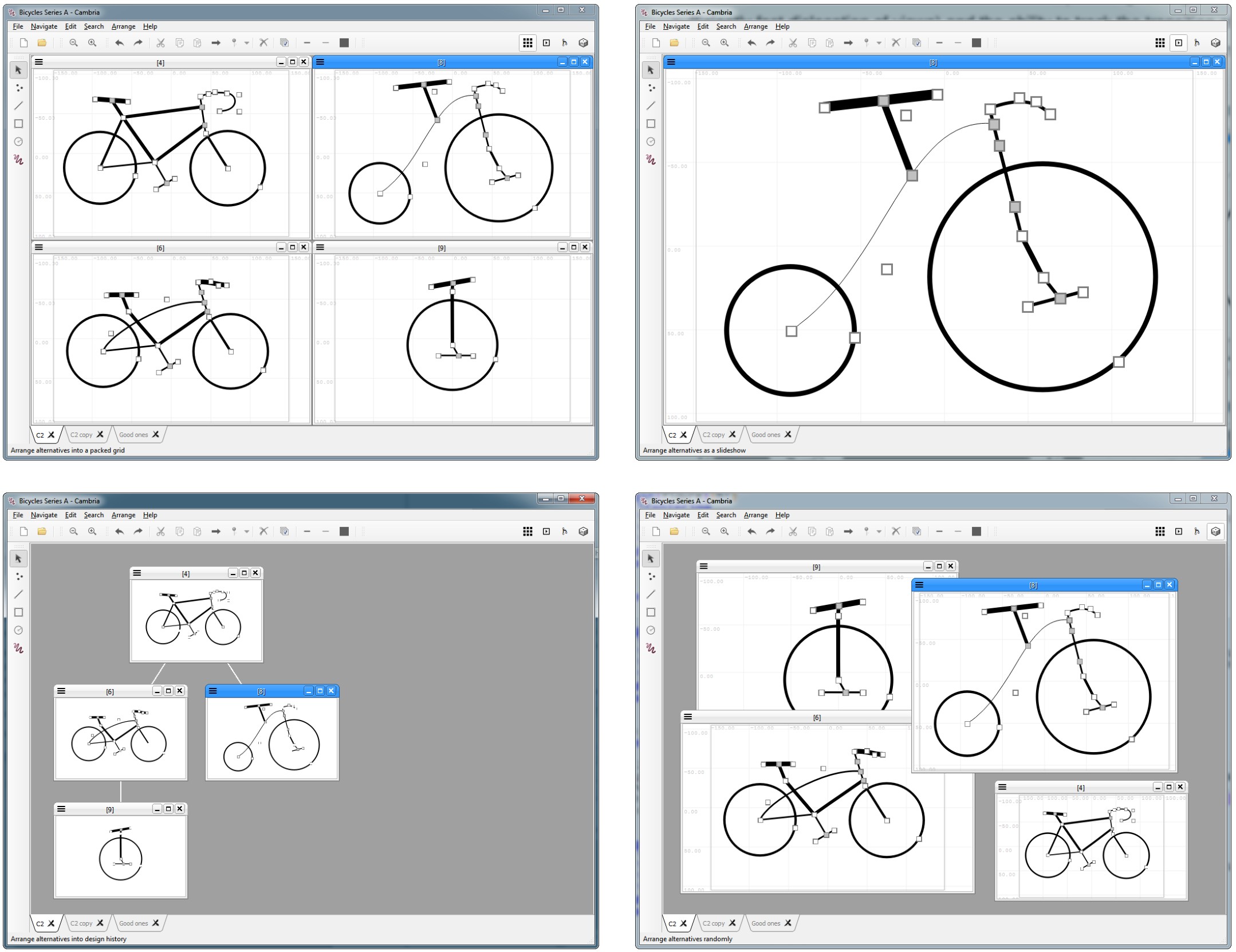 CAMBRIA prototype showing four parallel parametric design models, and four different arrangements.
CAMBRIA prototype showing four parallel parametric design models, and four different arrangements.
“Think-aloud” EvaluationPermalink
In the first evaluation study of CAMBRIA, six renowned HCI experts were recruited for a formative evaluation, with the main purpose being to obtain a high-level, qualitative feedback on the prototype. The experts were encouraged to “think aloud” as they explored and interacted with the prototype. Each expert’s session was recorded using video and audio equipment. The figure below shows the analysis (“coding”) of a participant’s session, conducted using the NVivo qualitative analysis software.
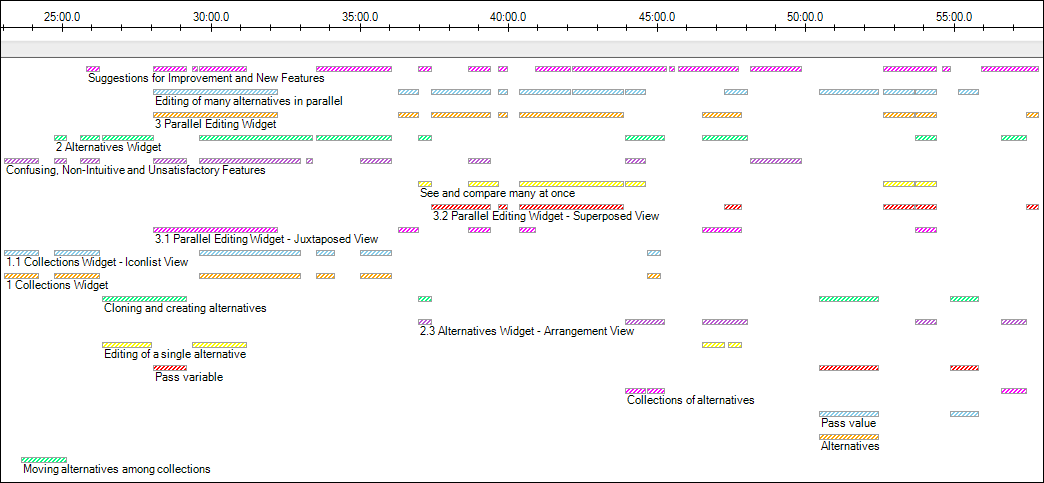 A participant's interview, coded into recurrent themes.
A participant's interview, coded into recurrent themes.
 Expert feedback per major functionality of CAMBRIA.
Expert feedback per major functionality of CAMBRIA.
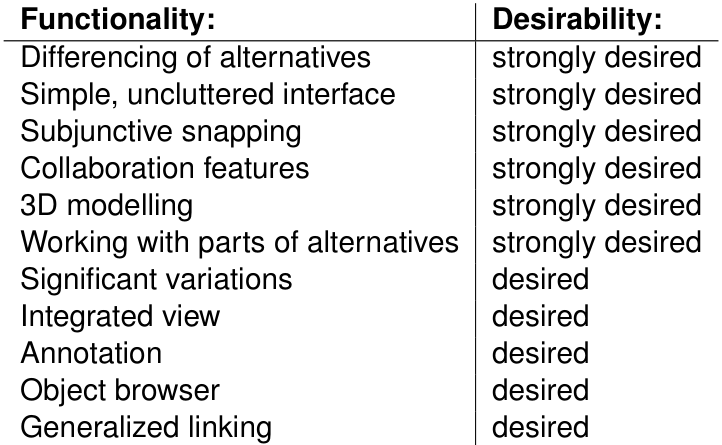 New CAMBRIA features desired by experts.
New CAMBRIA features desired by experts.
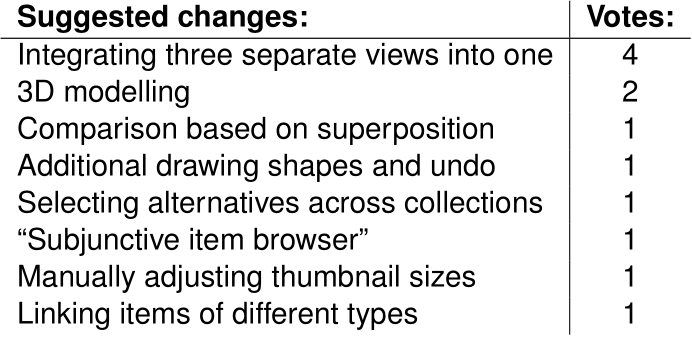 Changes that should be made in CAMBRIA, as suggested by the experts.
Changes that should be made in CAMBRIA, as suggested by the experts.
Analytical Evaluation of the User InterfacePermalink
In the second study, the prototype was evaluated using an analytical method based on the Cognitive Dimensions (CD) framework by Blackwell, Green, et al. For each of the dimensions (visibility, juxtaposability, hidden dependencies, error-proneness, and abstraction gradient), CAMBRIA was assigned a descriptive score such as “good”, “adequate”, “poor”, and “non-existing”. The latter two scores (“poor” and “non-existing”) called for design interventions indicated in the rightmost column of the table below.
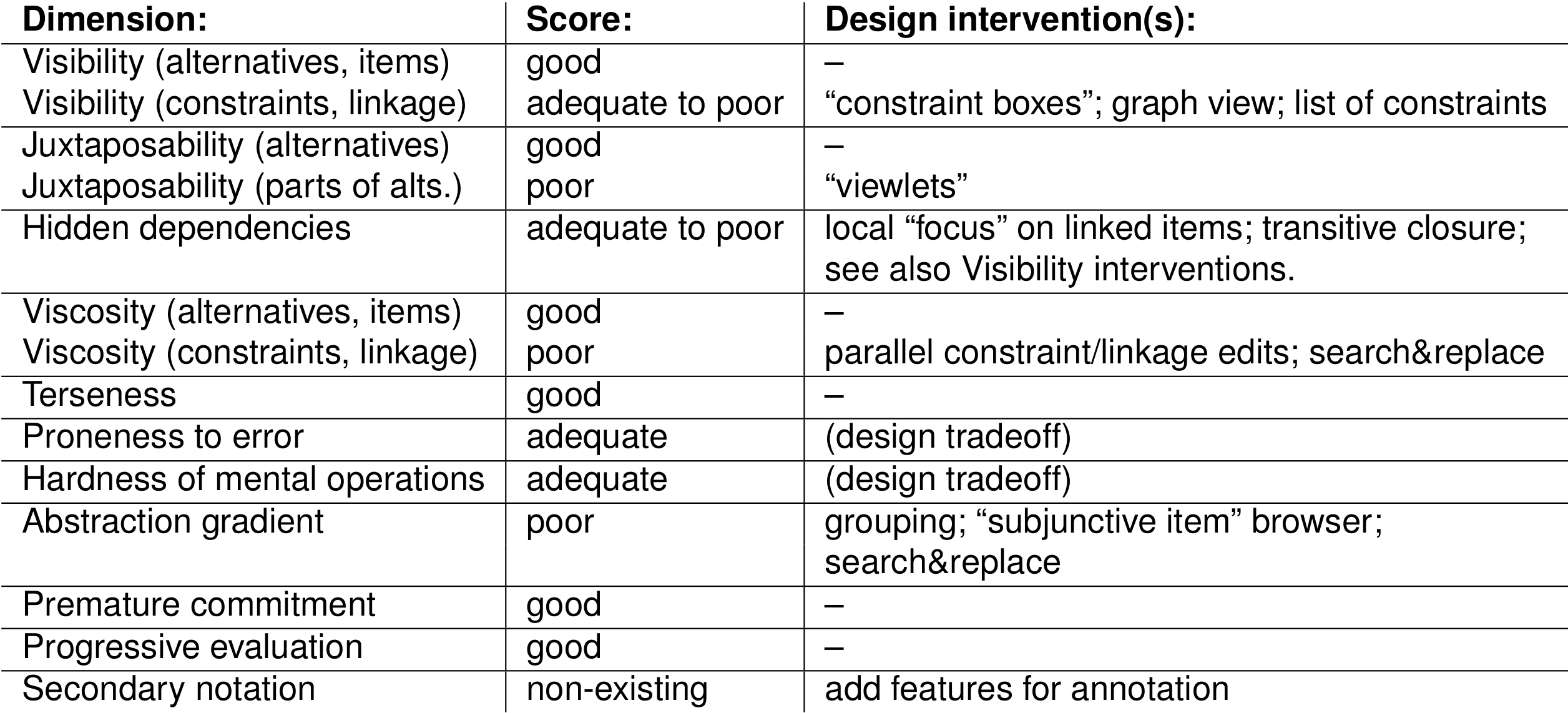 Evaluating cognitive dimensions of the CAMBRIA prototype.
Evaluating cognitive dimensions of the CAMBRIA prototype.
A representative conference paper on CAMBRIA:
S. Kolarić, H. Erhan, R. Woodbury (2017) CAMBRIA: Interacting with Multiple CAD Alternatives. In: Çağdaş G., Özkar M., Gül L., Gürer E. (eds) Computer-Aided Architectural Design. Future Trajectories. CAADFutures 2017. Communications in Computer and Information Science, vol 724. Springer, Singapore. https://doi.org/10.1007/978-981-10-5197-5_5